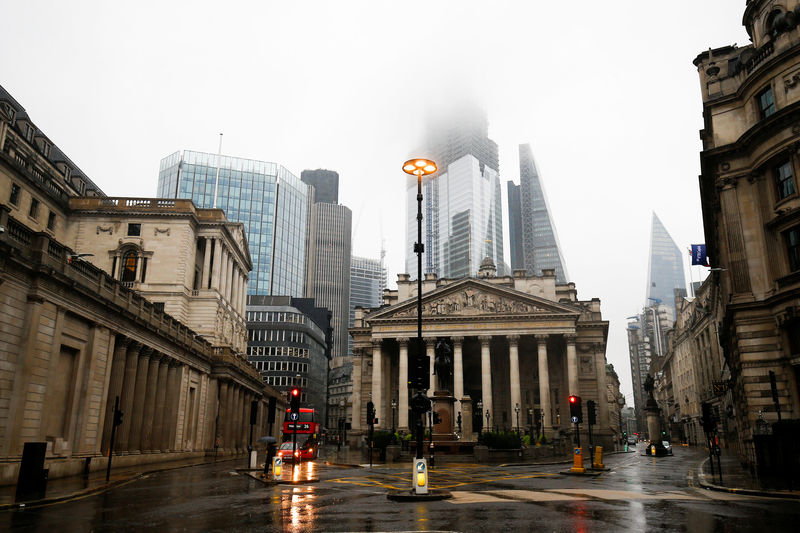(Bloomberg) -- The Bank of England is growing increasingly concerned about Brexit uncertainty and the global slowdown, pushing two policy makers to unexpectedly vote for an interest rate cut.
Michael Saunders and Jonathan Haskel wanted to lower the benchmark by a quarter point -- the first votes for looser policy since 2016 -- citing threats to the outlook and signs of a turn in the labor market. While the majority, including Governor Mark Carney, voted to keep the rate at 0.75%, they signaled that a further deterioration could see more policy makers support easing.
“If global growth fails to stabilize, or if Brexit uncertainty remains entrenched, monetary policy may need to reinforce the expected recovery,” officials said in the summary of the meeting, published Thursday.
The pound declined after the announcement, and was 0.2% lower at $1.2827 as of 12:05 p.m. London time.
The comments show the BOE is shifting closer to other central banks, such as the Federal Reserve and the European Central Bank, which have already cut interest rates this year. Still, signs of easing in the China-U.S. trade tensions on Thursday could be good news for the global economy and mean less chance of a worse scenario emerging.
While Saunders had been mentioned as a possible dissenter this month, Haskel’s vote for a cut is a surprise.
The BOE also said that if the risks don’t materialize, their previous guidance that limited and gradual hikes may be needed still stands.
In their re-branded Monetary Policy Report, officials cut their forecasts for growth and inflation. The projections highlight the impact of the global slowdown, with external factors accounting for most of the downgrade.
New Assumptions
The new forecasts are now also underpinned by a new assumption for Brexit, after U.K. prime minister Boris Johnson secured a new deal with the EU. The outlook is predicated on an “orderly transition to a deep free trade agreement” similar to the Comprehensive Economic and Trade Agreement in place between the bloc and Canada.
While a large amount of uncertainty remains, a major effect of the new assumptions is that the BOE is girding for greater impact within its forecast period. It previous based its forecasts on a less precise adjustment taking place over “many years.”
Based on market pricing for one rate cut over the next three years, the BOE now sees 2020 growth at 1.2% -- which would be the worst since 2009 -- from 1.3% previously, and the following year at 1.8%, down from 2.3%. The level of GDP will be 1% lower at the end of the forecast period than expected in August.
Officials now see far weaker inflation in the near-term thanks to a drop in energy prices, and it will remain below target until late 2021.
The U.K. is headed for a general election in December, and the country’s deadline to leave the EU has been postponed until Jan. 31. While Brexit is dominating the economic outlook, there’s also no escaping the slowdown in global growth.
The BOE devoted a whole section to trade protectionism and the global outlook. The trade dispute between the U.S and China has caused a fundamental shift in policy after a 50-year trend towards liberalization, boosted uncertainty and weighed on growth, the BOE said.
